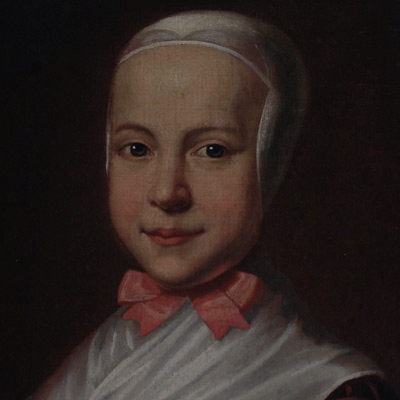The First Sisters
Moravian Origins | North Carolina: A New Home | A Center of Commerce and Trade | The First Sisters | Bethabara’s Enslaved | Moravians at War
 “It is true that there are too few sisters in Wachovia in comparison with the Brethren there; and where they are lacking much remains undone that really ought to be attended to. The brethren in Europe know this and assuredly would have sent a company of 60 to 80 sisters, had the war not intervened.”
“It is true that there are too few sisters in Wachovia in comparison with the Brethren there; and where they are lacking much remains undone that really ought to be attended to. The brethren in Europe know this and assuredly would have sent a company of 60 to 80 sisters, had the war not intervened.”
-Letter from Spangenberg to Löesch, Nov 25, 1761.
By 1754, the first group of Single Brethren sent from Bethlehem, Pennsylvania had laid the groundwork for Bethabara and were ready to start families. However, they faced a major obstacle—there were not enough single Moravian women in Pennsylvania to send. Due to active land and sea combat in Europe during the Seven Years’ War, the Church had yet to immigrate a large number of single Moravian women to America. In Bethlehem, single men outnumbered single women seven to one.
After 1763, the situation eased as peace returned to Europe and the North Atlantic, permitting women to travel from Herrnhut to the coast, then by sea to Pennsylvania, and for some, continue their journey down the Great Wagon Road to Bethabara.
Before they could bring Single Sisters and married couples, the Single Brethren had to clear fields for agriculture, construct buildings for both industry and housing, and purchase livestock. After two years of preparations, married couples ventured down from Bethlehem. Among the party of twenty-three Moravians were Anna Henrich, Rosina Kühnast, Anna Maria Opitz, C. Barbara Kraus, Rosina Biefel, Helena Schmid, and Maria Schaub.
The presence of married men and women in Wachovia necessitated changes, both structural and societal, to accommodate the additional choirs. Construction of the “Family House,” a four-room house to accommodate married couples, began on October 21, 1755. The Family House reflects the 1750s shift in child rearing philosophy from the choir system to the nuclear family. Before, married men and women lived with their individual choirs. Now, they lived and worked together while raising their children. Watching and helping their parents instilled a work ethic in children that the individual choirs failed to do. By 1758, prominent Bethabara leaders, such as the doctor and the town manager, lived in individual family homes.
Women shared in most of the labor and were specifically tasked with fieldwork and spinning flax. Bishop Spangenberg noted the importance of married women in Bethabara, stating: “We would like to send you some 12 married couples who would in our opinion prove serviceable in Wachovia. Then the mill, the cattle, the laundry, mending, sewing, and the like could be attended to properly.” In addition to these jobs, local women took on leadership roles in the everyday devotional life of their choirs. In Bethabara, Anna Henrich, one of the first women to arrive, served the Married Sisters as a deaconess and was a meaningful part of their relationship with the Church. As deaconess, Sister Henrich could perform pastoral services within her choir and could assist in the Holy Communion. Moravian women differed from other colonial women at the time because they were educated and married later in life.
Growing Up in Bethabara
Along with their duties to the community and to the Church, women were an integral part of starting families and raising children. In the beginning, the Church did not wish to have children in Wachovia for several reasons: they were consumers rather than producers, the frontier was dangerous, and there were no institutions in place, like a school, to protect and nurture them. Although the Church discouraged children in Wachovia, some families still brought them. In November of 1756, Gottfried and Maria Grabbs brought their nine-month old son, William, to Bethabara. They were one of three couples who added a total of five children to the settlement between 1755-1765. Children were not only being brought to Bethabara, they were also being born there. On May 12, 1756, the first child, Anna Johanna Krauss, was born in Bethabara to parents Matthaeus and C. Barbara Krauss. The number of children would grow each year as more and more married couples settled in Bethabara.
The increasing number of children encouraged settlers to start a school. Thinking ahead of their time, Moravians placed a high importance on educating both boys and girls in the 18th century. In March of 1761, Brother Bachhoff, a teacher, established the first schoolhouse in Bethania. By the next year, Brother Petersen and his wife, assisted by Sister Kalberlahn, the widow of Bethabara’s first doctor, had begun a school for boys and girls in Bethabara.
